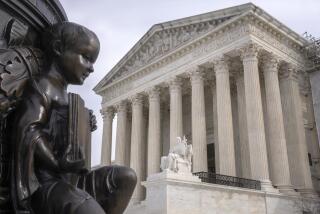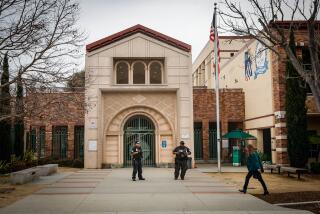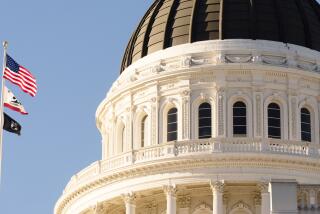Guard Kids and Constitution
- Share via
To understand the impulse that moved Congress to pass the Child Pornography Prevention Act in 1996, look behind today’s sordid headlines. Most publications, including this one, responsibly refuse to print graphic details of child molestation, whether by pedophile priests, pornographers or others. But ask cops or prosecutors specializing in child abuse what the sanitized word “exploitation” really represents and they’ll describe a spectrum of behavior--from perverted sexual bullying to abject torture, even murder--beyond a decent human’s ability to grasp.
The justices of the U.S. Supreme Court no doubt recoil at such abuse and understand just how loathsome the images of such exploitation can be. That they sided Tuesday with the 1st Amendment by overturning a portion of the 1996 act shows a wise and courageous allegiance to the rights that are this nation’s greatest strength.
The high court has long held that the Constitution protects pornographic images and sexually explicit speech, no matter how odious. But in 1982 the court distinguished child pornography from films or books that depict adults. It ruled that states may ban images of children engaged in sex acts without running afoul of the 1st Amendment because of the harm “to the physiological, emotional and mental health of the child.”
That decision came before digital technology and the Internet greatly expanded the ability of people to create and disseminate realistic images of assaults on children’s innocence. Congress responded with the 1996 act, intended to protect minors from online smut.
This week the court said Congress went too far when, in two sections of the law, it equated computer-generated or altered images of children engaged in pornographic acts with the real thing.
“The sexual abuse of a child is a most serious crime and an act repugnant to the moral instincts of a decent people,” wrote Justice Anthony M. Kennedy for the 6-3 majority. The 1st Amendment does not protect images of actual children, the court said, but it does protect sexually explicit images that only appear to depict children.
The court made clear that too narrowly defining the 1st Amendment would unconstitutionally restrain legitimate artists, including movie makers, possibly making it a crime to depict sex scenes involving underage characters, such as those in “American Beauty” or “Lolita.”
Backers of the 1996 act had argued that even computer-generated images could prompt pedophiles to molest children. Unfortunately, this may be true. But, as Justice Kennedy wrote in his opinion, “The mere tendency of speech to encourage unlawful acts is not a sufficient reason for banning it.”
The court made the right decision--a tough one. Now we urge lawmakers to work within these newly articulated constitutional limits to make it harder for pornographers to exploit real children.
More to Read
Sign up for Essential California
The most important California stories and recommendations in your inbox every morning.
You may occasionally receive promotional content from the Los Angeles Times.










